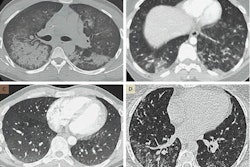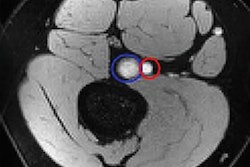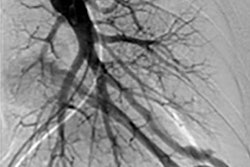
CT coronary artery calcium (CAC) scans of African-Americans revealed that smoking substantially increased their risk of developing peripheral artery disease, according to an article published online January 23 in the Journal of the American Heart Association.
Peripheral artery disease is a major disease burden that is nearly twice as common in African-Americans as non-Hispanic whites, and cigarette smoking is one of its major risk factors, first author Dr. Donald Clark III from the University of Mississippi Medical Center noted in a statement.
Seeking to understand the relationship between smoking and peripheral artery disease, Clark and colleagues examined the ankle-brachial indexes and CT CAC scans of approximately 5,300 African-American participants in the Jackson Heart Study -- an ongoing, large-scale investigation of key cardiovascular risk factors in the African-American population.
Their analysis revealed that African-Americans who smoked were eight times more likely to have high calcium buildup in the aorta, compared with African-Americans who did not smoke, and two times more likely to have peripheral artery disease in their lower extremities.
| Association between CT calcium score and peripheral artery disease risk in smokers | ||||||
| Never smokers | Former smokers | Current smokers | ||||
| CT calcium score > 75th percentile | Hazard ratio | CT calcium score > 75th percentile | Hazard ratio | CT calcium score > 75th percentile | Hazard ratio | |
| Abdominal aortic | 17.4% | 1 | 41.1% | 2.9 | 45.2% | 8.4 |
| Aortoiliac | 16.9% | 1 | 41.8% | 3.1 | 47.2% | 9.6 |
In addition, the researchers discovered that there was a dose-dependent relationship between the disease and smoking. Those who smoked 20 or more cigarettes per day (about one pack) had a significantly greater risk of peripheral artery disease, compared with those who smoked fewer than 20 cigarettes a day.
"Establishing a clear association between smoking and peripheral artery disease in this particularly vulnerable population can help guide our efforts to lower their risk and to help them improve their health," Clark said.




















